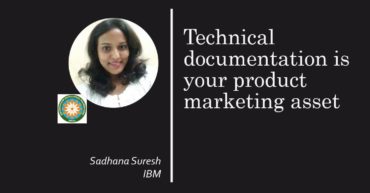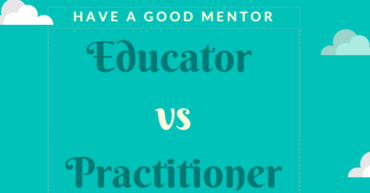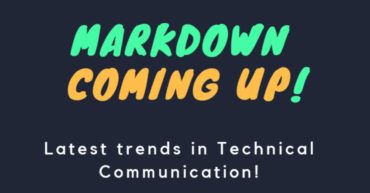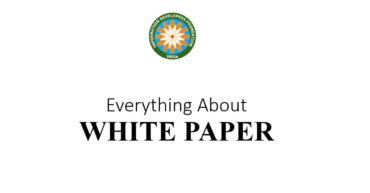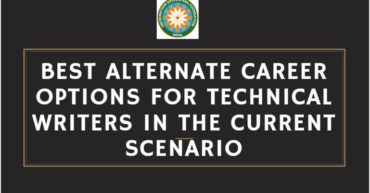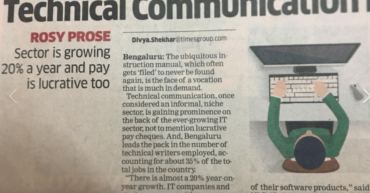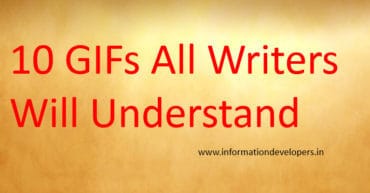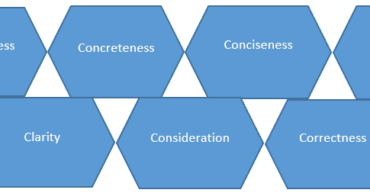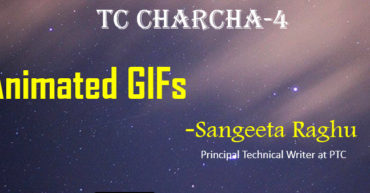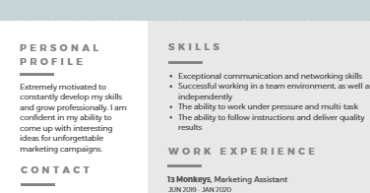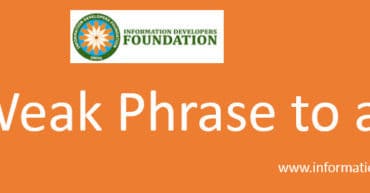Technical writing
Information developers provide the best Online Technical Writing Courses in Bangalore. Technical writing is a distinctive and varied subject that interacts with the most cutting-edge technologies available today. Being proficient in all the most cutting-edge technology gives one an advantage over other professional career alternatives in this creative and artistic industry. He has left his impact in a variety of industries, including biotechnology, robotics, consumer electronics, finance, and computer hardware and software. Technical (specialized) information is conveyed through it, typically in the form of user manuals, instructional materials, informational guides, and many more. These could be printed, portable documents like PDFs, or internet guides. User guides and technical writing serve as an organization’s public face and a reflection of its professionalism in the customer-centric business models of today. An expert writer who plans, develops, maintains, and updates technical documentation, such as user manuals, white papers, design specifications, and other materials, is known as a technical writer. A professional technical writer will often edit and format the work of engineers, scientists, and other experts who also produce technical writing. A technical writer is someone who conveys data on a technical subject, targeted towards a particular audience for a particular purpose. A skilled technical writer must be able to communicate information succinctly, clearly, and in a language that is suitable for the audience’s needs. Increase Your Knowledge Technical communicators work in a demanding, interesting area that puts to the test their capacity to change with the times and pick up new abilities. A career in technical communication will be fascinating for those who appreciate learning new things. A career in technological communication also enables you to learn programming and web design abilities, broadening your knowledge and elevating your value as an employee and job candidate. WHO CAN GO AFTER A JOB IN TECHNICAL WRITING? Any engineer or graduate Those who have any IT experience Healthcare transcribers Call Centre Managers Computer programmers Professors, Teachers, and Lecturers Research students When you have finished this course Almost Every Industry Has Jobs Technical communicators are typically employed by the industry you are considering for a career. Technical communicators work in virtually every business where people must comprehend and apply technology, including IT, computer science, engineering, medical, environmental studies, electronics, government, media, publishing, and the aerospace sector. They play a crucial role in the technology civilization of today. Where Can This Job Lead? Technical writers can rise to roles as project managers, senior technical writers, or information designers. Technical writers may become senior technical writers, information designers, project managers, or even system architects in larger organizations. Promotion frequently comes with greater responsibilities and compensation increases. Designations The most popular job title for this occupation is technical writer. Other names used include information developer, technical editor, web editor, policy and procedure writer, proposal writer, publications specialist, documentation specialist, and information designer. Market trend or future trend The high tech business is booming (typically!) and there is a huge need for technical communicators, which is being driven by the computer industry. Technical writers are truly in limited supply in the United States, India, and Canada, and the situation is quickly worse in other nations as well. As a result, firms are willing to hire beginning writers who want to break into the industry. CONCLUSION Information developers provide the Best Online Technical Writing Courses in Bangalore. Information developer is the best platform for the training of Technical Writing. Therefore, for individuals who want to apply their writing skills, technical writing is one of the finest paying careers. Technical writing should have the same explosive expansion as the computer, telecommunications, and other high-tech industries.
Technical writing can be a good career choice for you if you enjoy both writing and technology. If you love technology but don’t particularly enjoy coding all day, there are other options you might consider. Information Developers provides the best Technical Writing Course Hyderabad. If you enjoy teaching others, participating in open source projects and mentoring others to do the same, or simply enjoy breaking down complex ideas into digestible chunks in your writing, technical writing might be right for you. Let’s get down to the basics and discover what you need to know and take into account before beginning a technical writing project. Technical writing: What is it? Technical writing is the art of explaining things in great detail so that readers can grasp a certain ability or product. These instructions, often known as technical documentation or tutorials, are written by technical writers. User guides, online help articles, or internal documentation for programmers and API developers may fall under this category. Technical information is presented in communication in a way that allows the reader to utilize it for the intended purpose. Why Technical Writing Is Beneficial Lifelong learners are technical writers. You must be knowledgeable in the subject matter you’re writing about because the work requires explaining difficult topics in clear, simple language. or be open to learning more about it. This is fantastic since you will gain expertise in that field with each new technical document you research and create. Additionally, technical writing improves your ability to empathize with users. It enables you to focus more on what readers or users of a product feel than on your own thoughts. Contributing to organizations is another way that technical writers might earn money. Here are some companies that pay you to write for them, including Stack Overflow, AuthO, Twilio, and Smashing Magazine. In addition to all of this, you can participate in paid open source initiatives like Outreachy and Google Season of Docs as well as donate to open source communities. You can also pursue technical writing as a full-time career because many businesses require those talents. Skills a Technical Writer Must Possess Recognise and utilize proper English It is essential to acquire a solid command of English’s tenses, spellings, and fundamental syntax before you ever attempt writing. A poorly written post with errors in grammar and word choice won’t be read by your readers. Understand how to speak simply and clearly about things It’s not necessary to be able to explain a procedure to others in detail just because you know how to create a feature. It takes empathy and the ability to educate or communicate concepts in a way that is appropriate for your target audience to be a successful teacher. I think that authors are created, not born. And the only way to improve your writing is to write. Before you put pen to paper, you might not realize that you have the ability to write. And writing is the only way to find out if you have any writing abilities. I therefore urge you to begin writing right away. To flex your writing muscles, you can choose to start with any of the platforms I outlined in this section. Of course, having some experience in a technical subject is also quite advantageous. The Process of Technical Writing Assessing and comprehending who your readers are Your target or anticipated audience is the most important thing to take into account while writing a technical essay. It needs to be your top priority at all times. An effective technical writer bases their writing on the reader’s context. Let’s use creating an essay for novices as an illustration. It’s critical to avoid assuming that they are familiar with particular ideas. You could begin your article by describing any prerequisites. This will guarantee that your viewers are equipped with the knowledge they need to understand your content before they start reading it. To make it easier for your readers to find the information they require, you may also add links to helpful sites. You must learn as much as you can about the reader of the paper in order to know for whom you are writing. It’s critical to understand whether your audience is knowledgeable on the subject at hand, is unfamiliar with it completely, or falls somewhere in between. Additionally, your readers will have their own wants and needs. You need to know what the reader will be expecting from the paper when they start reading it. Before you begin writing, ask yourself the following questions to better understand your reader: Who reads my work? What are they lacking? Where are they going to read? When are they going to read? How come they will be reading? How are they going to read? These inquiries also encourage you to consider the reading experience of your audience, a topic we’ll cover more fully later on. Consider user experience The user experience is equally crucial in technical documents as it is throughout the internet. Now that you are aware of your audience and their requirements, consider how the paper will meet those requirements. It’s very simple to overlook the reader’s intended purpose of the content. Take frequent breaks from writing and read the document as the reader would. Do you know if it’s reachable? How will it be used by your readers? When are they going to use it? Is it simple to use? Writing something that is both valuable to and usable by your readers should be your aim. Create a Document Plan You can then conceptualize and plan out your paper while keeping in mind who your users are. There are several steps in this procedure, which we’ll go over presently. Do extensive study on the subject You must conduct research on the subject you are writing about as you are planning your article. You can access a tonne of things to read and gain deeper insights from
Step-by-Step Guide for writing White Paper This is a complete guide to enable technical writers to write a white paper that serves its purpose completely. it can be used by the content writer, freelancer, businesses and entrepreneurs to develop a whitepaper to exhibit their authority and persuade readers in favor of their sale goals. This is a go-to- resource for the white paper. In this post, we have covered Introduction and goal to write the white paper History Who should publish the white paper How to write the white paper Steps for writing the white papThe myth Myths about the white paper and downloadable resources. Introduction and goal to write the white paper: A white paper is a report with authority that gives information about any complex issue concisely. The real motive of the white paper is to inform the reader about the issue, help them solve a problem and make a decision. Some more goals for a white paper are: Selling a product or service Promoting a technology Funding a project Establishing a reputation for expertise An educative and well-illustrated whitepaper is capable to influence the readers. One thing which I personally like about writing the white paper is it brings a lot of well-paying clients to me :-). Learn more about freelancing. History of white paper: The history of white paper goes back to 1922 when the first white paper was issued in the British Government called Churchill white paper. You may wonder, why this is called a white paper? The term white paper was derived from the color of the cover of the document. Who uses white paper: White papers are used both by Government and business to business marketing. Let’s explore how: – Government: The government uses whitepapers to present their policies to the public and officials inviting their opinions simultaneously. White paper becomes a medium to predict the possible impact of its policies on the general public before turning it legit. It also helps government discover probable controversies that can arise through a proposed policy. B 2 B marketing: Initially, the white paper was considered as a medium of marketing in business. White papers are used as a promotional content of a product or services with the motive to expand business and attract investors. They are also used to influence partners, journalists, stakeholders, customers, and analysts. They are also used as a tool to generate sales lead and making business cases. White papers are a form of content marketing to promote sponsor and increase web traffic. They can influence the decision-making process by pointing out the problems or the discussing the possible solution of a problem. How to write a white paper? A white paper is a document that can have one to five pages describing the problem and the possible solution of a case. Its composition should include alternatives to meet the client’s marketing need, handling municipal issues, suggesting the use of certain tools for any technical or business processes depending upon the issuing authority whether it is governmental or business. Before drafting a white paper, things we should keep in mind that is mandatory for creating an ultimate white paper are listed below. Basic groundwork to be done before writing- Audience Awareness: The first requirement is to know who your audience is. The educational background, professional needs, the position they hold etc gives you a more relevant picture of what your document should look like. Understanding of audience helps to create a relevant, relatable paper. The convincing method for the suggested solutions would be more understandable to your audience if you have clarity about their needs. Your arguments in favor of a possible solution would be more relatable to them. Audience proficiency: It is very necessary to know how expert is your audience about a subject. It will affect the level of complexity of your white paper. The terms you refer to or the situation of example will be highly influenced by the kind of expertise your audience holds. Writing for the government will be about the policies, for corporate it would be about the budget, profit etc and for technical experts, it can have a lot of technical terms. Now the writing part- What is the first thing one notice in a document? How to write the headline of the white paper You can give it a headline ‘white paper’ but it will definitely attract the attention if it has some title that can hold the eye of the reader. An old proverb is ‘the first impression is the last impression’. Your title is the magnet that can compel a reader to dive deep into your content and think about it. Form your title that is relevant and eye-grabbing. Introduce your content to the reader briefly in the opening para. It will give them an idea of why is the problem existing why there is a need to implement different solutions suggested. An illustration of the basic cause of the problem can influence their decision in case of any prior solution is running in the mind of the reader. Spot the problem and illustrate why it is a problem, how did it arise. Give a background reference about the problem. Steps to write a White Paper Who? Why? How? What? Find out WHO your audience is. When we know to whom we are going to address, half work is done. The tone, the language, terminology, supported facts everything becomes clear and the path ahead becomes easy. The next mandatory thing to consider is WHY we need to write it. An explanation of the problem should be written to make it easy to identify and understand. A brief of the history, HOW the problem arose should be described. It creates relevance among the audience. WHAT is the measures to be taken should be defined. The solution the company has to offer should be proposed. It would be good if
GIFs for writers The two most engaging power of author are to make new things usable and familiar things new. Being a corporate writer we thoroughly enjoy our work by taking everyday challenges in stride. Whether it is information gathering, review process, client feedback, meeting deadline, and our colleague’s attitude. Our passion and flair for writing keep us going also needless to mention EMIs have to play its own role. In this post, I have tried to gather some Gifs for writers which truly depict our situation and all the writer can understand. Enjoy!!! When you reach office and you come to know you will have to write a new configuration guide in next 48 hours. The important client is waiting. Tip Commit if you can deliver or talk to the concerned person and your manager. If you are following the scrum process try to find why this was not discussed in the planning meeting and raise the issue in the retrospective meeting to avert this kind of situation in future. You can see this video to understand the Scrum Process. Shocked Joey GIF from Shocked GIFs Your subject matter expert refuses to give you time, the expert is busy. Tip Send the meeting invitations and reminders and if this becomes the routine. Try to identify the root cause and if required discuss with your manager. In the Scrum process try to clarify all your doubts during planning and story elaboration meeting. You can see the video on how to interact with Subject matter expert. Umm Wait for GIF from Umm GIFs During daily scrum or retrospective, your team indulge in technical discussion Tip Ask to park the topic to discuss after the meeting is over as it is irrelevant for you. You can raise the concern with the scrum master if this is happing regularly. Else, use two feet law 
7 C’s of Effective Communication Today effective communication and communication gap is one of the major challenges every business is facing and things become worse if the team is distributed across the globe. This rise the scope of good technical communication and business communication. Come let us see the importance and how we can improvise it in detail in this blog post unraveling secrets of good communication for effective communication. Listening is the first step toward effective communication. It is also the best way to avoid problems and complications before it could arise. But one thing that we need to take care of is that this communication should be perfect in all aspects. Perfectness in communication comes when we follow the principles of communications and are also aware of the types of communications and the protocols tagged to it. In communication, not only the literal meaning but the hidden meaning is also involved which should be conveyed as well as should be understood clearly. In a communication one is the listener and the other one is the speaker. If both are best in their communication there is no chance for any discrepancy to creep in the message and distort its meaning. In psychology classes, an activity is done wherein a message is conveyed to a student and it is let pass through all the students by one by one communication. It has been found that the last person when reads out the message, it’s completely different. It is just because of the lack of good communication, which leads to the encryption of the message. Types of Communication Now, let’s decode the magic aphorism for better communication. First, we need to know the three types of communication. Verbal Written Non-verbal Verbal Communication It is the oral communication that involves speaking to somebody directly face to face or on phone. This communication can be one to one and one to too many also. Storytelling is also a verbal communication. In a verbal communication, it is necessary to mind few things before, to convey the right message in undiluted form to the listener in a way that they receive it in the purest form and senses. The things needed to be kept in mind is: Planning Plan the execution of your communication that is knowing your audience, estimation of time, clarity on topic and other factors. You can read more about planning on this blog post. Pronunciation A clear pronunciation is necessary to reach the audience and not leaving them guessing your words. Bad pronunciation can reduce the interest of the audience. When you are in a meeting where participants are sitting in different part of the globe try to speak in correct pace and pronunciation. Precision Accuracy and exactness in your topic can hold the audience, try not to be verbose and let your listener get bored. A big lecture deviates from the mind of the audience and they lose the interest. Be precise and take little time yet conveying the message completely. Put Straight Arrange and organise your message in a proper flow. Convey it step by step. Jumping from one step to another could hamper your message and miscommunication or confusion would ruin the whole motive. Politeness Politeness creates a good impression and lets the audience take interest in you and more focused on what you say. Aggression can divert the attention of the audience. Written Communication It is the way of communication that involves written messages such as e-mails, memos, proposals, manuals, instructions manual etc. It can also be one to one or one to many. Written communication does not happen in the real time, but it is easy to write clearly if we learn how to write effectively. Concise and accurate writing is best and is entertained more seriously. No one bothers to read a long note, it only gets a scanning eye. Consider a few tips for writing and you will optimize your effort. Write simple and short sentences. Avoid Jargons Say no to redundancy Explain in steps Proofread before sending Increase the readability. Highlight the important points. Non-Verbal Communication In this communication words are not involved, either way, be it be writing or speech. It is the tone of voice, facial expression, kinetics that convey the untold messages. In fact, nonverbal communication can be understood easily. An emphasis on a particular word in a sentence can change the whole meaning. The frequency and sharpness of voice tell about our mood and emotions. For example: “May I do this for you?” The message conveyed is that you might have more options to take help but let me do it. “May I do this for you?” Here I am seeking permission to help you. Nonverbal communication can be done through Facial expression Touch Body language Tone of voice Eye contact Voice modulation Now, that we are aware of the types of communication let’s move towards the principle that makes all these types of communication more effective. Principles of Communication For an effective communication 7C’s of communication must be adopted. These are: Completeness: For an effective communication, it is very necessary to convey the complete message. Your message should be based on facts and according to your listener or audience’s perception. Provide additional message wherever needed. Never leave any room for further clarity after the message is conveyed, to avoid additional cost. Make your message complete and filled with all the vital elements and information to make it crystal clear. An incomplete message can create confusion or can be distorted by the audience’s own assumption in case of ambiguity. In addition to this completeness of message helps build a good reputation and adds worth to your message that is the key factor to hold on the audience. Concreteness: Being specific and clear, supported by facts is what a concrete message is all about. Concreteness does not let the message to be misinterpreted. It prevents confusion and strengthens the
Animated GiFs- Latest trend in visual communication Animated GIFs is latest trends among next-gen professionals for visual communication. LinkedIn partner with Tenor to add GIFs to messaging. Use of GIFs on your blog more shareable on the other hand it can be used in the technical document to make complex idea simpler. It can also use for internal communication like (sharing a process to reproduce bug/issue by a tester to a developer) You must use in the right place in the right place overuse of it can dilute the purpose of your technical documentation. Information Developers Foundation is committed to keeping you updated on the latest and in-demand skill. This Webinar is just a step toward it. You can subscribe to our website if you do not want to miss any of our action. How and Why to create Animated GIFs? This post is a recording of the TC Charcha (webinar) hosted by Information Developers Foundation on 24th March 2018. Our esteemed guest of the night Sangeeta Raghu presented a very informative and engaging webinar on the Animated GIFs with a demo. Highlights: What Are Animated GIFs? Why use it? Advantages GIFs Where to Use it What Tools to Use? Best Practices Where To Start? Examples You can watch the video but you will miss the enjoyment of live interaction what we experienced. Hope to see you in our next Content Charcha on API Masterclass by Pema Sherpa on 28th April 2018. Register Now. You can also see our recorded webinars.
Technical writers in 2018_ IT and technical communication industry is an ever-changing industry and there is no stagnancy when it’s up to the technical aspects. Every now and then new updates and new technologies are reserving their place in the software industry. To sustain in this environment a technical writer needs to be armoured with the skills to become an asset to the industry. In this blog post, I have tried to mention few points that are necessary for a future technical writer. 1. Will be Agile and Adaptive A future technical writer should be agile and adaptive. He should have an iterative approach to software delivery, in short agile that is to build software incrementally from the start of the project. He should be adaptive to new technology and updates to do the work in time box and effectively with negligible errors. Being adaptive helps to equip with new technologies in no time, reducing the time and effort given to a project. 2. Will love line of Code A new age information developer should be well versed with the line of codes equally as the line of words. He should have a love for codes to understand and deliver the best documentation. He should not be necessarily a programmer but being in love of code will let him be the first choice for any company that needs documentation. 3. Will not follow traditional DDLC The use of traditional Document Development Life Cycle will lose its frequency in future because it will have to make way for new methodologies of documentation. It is necessary for a future technical writer to be ready to absorb the new advancements for a better document development. 4. Will Ready to Automate Information Developers in the coming future will have to gear up themselves to automate the things for better performances. Automation reduces the efforts, errors and the delivery time in creating a document. A love for automating things will let a technical writer stand apart from the others. 5. Will Content Curator to Content Marketer Unlike a traditional technical writer, a future information developer should not only write a content but also will have to market it. He should promote, reach out on social media, connect with influencers, engage with the community, to market the content. 6. Will be more Customer focused A technical writer should be aware of the customer interaction with the document. The document should be customer friendly and should have the clarity to have a better understanding. User manuals, online help etc are the things that are used by common people who are not technocrats so, it should be documented in such a way that even a non-tech background people can use it effectively. 7. Will not know the pain of unstructured authoring Rinni Mahajan- TechComm Rising Star-2017 Structured authoring reduces the error percentage and consumes less time. In the coming years’ industry will move more towards the use of structured authoring leaving the old unstructured authoring tool. 8. Will be more open to explore and innovate A future technical writer should be open to experiments not only with the with tools and technologies but with his writing skills also. Creativity and experiments help in new discoveries that ease the documentation process. 9. Will Unlearn and Learn Continuously To learn new things we have to unlearn old technologies. A technical writer deals with tools that are regularly updated so he should be ready to unlearn and learn to get the best out of every new update. 10. Will be a Generalised specialist An updated and new-gen technical writer should not be just a technical writer but an information developer. The documentation will not be just a written document but preceded by some research and experiments too. An information developer should know all form of communication such as content writing, UX designing, business writing, digital marketing etc. 11. Will come more from engineering college than Art or Mass Communication. 12. Will have more Fun Join Information Developers Foundation for Continous Learning.
Technical writer resume A CV can be the best tool to explain your expertise to a would-be client. Not all freelancers use a CV/resume to market their services or to convey their experience to their clients. It’s a great way to convey complex things to the potential clients. A freelance CV is very different from the one used to apply for a job, and it’s a good idea to learn how to approach CV development for freelance work even if you decide it’s an approach that isn’t right for your business. If you’re starting a new design agency with only you or a partner, you should also consider including a resume on your “about page”. According to many freelancers, the easiest way to convey their expertise and experience to a client is in a CV/Curriculum Vitae/resume format. Many freelancers use a very different style of CV once they have a few projects under their belts though, it can be produced in the conventional format occasionally. Short and Crisp like your Doc The best CVs are short and to the point. There are some exceptions to this rule (for example, IT contractors who may change projects every few months) but, in general—the shorter the better. If you’re going to be competing against a bunch of other freelancers for a project, keeping things short will make you unique and make it easier for a client to push you further into the selection process. An ideal freelance CV covers a single page and no more than two pages. “Simple can be harder than complex: You have to work hard to get your thinking clean to make it simple. But it’s worth it in the end because once you get there, you can move mountains.” – Steve Jobs This is one of the best rule for everything in life—not just freelance CVs—Keep It Simple Stupid. The less wordy you are, the easier it will be for a client to get involved with what you do. But you have to work hard to get your thinking clean to make it simple, as simple is often harder than complex. What goes into a Freelance CV? Depending on their profession, their industry vertical, and their target audience a freelance CV inputs will vary from freelancer to freelancer. However, most freelance CVs will include: 1. Your Personal Profile This is a brief statement of who you are and what you do. It’s where you make it clear what you offer to the client. If you are dealing with a specific client, you will want to tailor this profile to their needs. You will be more general if you make this available for download on your website or from a freelance job board. In general, you should not focus on describing yourself but describing what you can do for your client. Please remember—the client is not interested in you but in how you can help them. 2. Your List of Skills Break this down into a manageable list (again—if a client is looking for certain skills—make sure they’re on this list). Ideally, unless you’re looking at a ridiculously complex project, you will want to keep this to a list of no more than 5–10 skill sets. Pick only those skills that are saleable to clients (pretty much everyone can use MS Word today, for example – so unless you’re an administrator with seriously advanced skills, there’s probably no need to mention it). 3. A List of Projects Completed and Your Achievements This is really important. Clients aren’t as much interested in what you’ve done as what you can do for them. “Developed a logo for XYZ Company” is fine as far as it goes but… so what? How did that add value to XYZ Company? However, “Developed a logo for XYZ Company as part of a major rebranding exercise that resulted in a 35% increase in sales.” tells a much clearer story. This is the difference between selling logos for INR 5–INR 50 and selling them from INR 500–INR 50,000. Your work should add value to your clients’ bottom line in some way or another. Don’t be afraid to ask clients what they’re doing with your work and what they expect to achieve with it. And don’t be afraid to go back and ask whether they got those results, too. Whatever field of freelancing you are in, it’s important to understand the value you create. This section can change. If you’re targeting a specific job, including projects and achievements relevant to that job. If you’re using the CV for general marketing, pick your biggest wins. You can, in this section, refer to projects that you completed as an employee (as long as you don’t infringe any contracts with a previous employer regarding confidentiality) until such a time as you have sufficient freelance work under your belt. Don’t be afraid to use graphics to highlight what you’ve done and what you can do. This can make it much easier for a client to understand your strengths. 4. A Potted Career History You’ve already told clients what you do and what the benefits are of your work; you don’t need to deliver a ten-page history of every job you’ve done and every achievement you’ve ever scored. You should, however, show any relevant experience gained. In most cases, a job title, a company name, and dates will be enough to show this. You can always provide a link to your LinkedIn profile if the client needs more information. 5. Your Contact Details Do yourself a favour—keep these minimal and at the end of the page, not at the top. Clients are buying services, not your home address. It’s vital you offer a client a way to contact you, but it’s not vital that they see this first. If your CV gets shortlisted, they’ll make it through to the contact details; don’t worry about that. In many cases, an e-mail address and a phone number will be enough for this and if you have a website. Consider including the office address if
Developer documentation Style Guide In this blog post is for technical writers involved in writing internal developer documentations. In this, you will learn brief comparison of different style guides (Google, Atlassian, and SalesForce). Style guide for technical writing It’s the first thing a newcomer needs to study to understand and track the changes in a project. A bad documentation is worse than no documentation at all. Many companies have their own internal developer documentation style guide to write documentation error-free and absolutely clear to prevent any kind of ambiguity but, when they come across external contributors it becomes tough to understand and change the style guide into its own format. Google is releasing its internal developer documentation style guide. This can quite literally guide your documentation, giving you a great starting point and keeping things consistent. If you want to follow Google’s style guide for your project, you can simply access it here. In order to better support external contributors to open source projects such as Kubernets, Amp, or Dart, recently Google has released its own internal documentation style guide. The documentation style guide of Google can be useful for general issues like reminders to use second person, present tense, active voice, and the serial comma. They have also listed a few things to avoid while documentation. Being too cutesy . Placeholder phrases like ‘please note’ . Choppy or long-winded sentences . Starting all sentences with the same phrase . Current pop-culture references . Jokes at the expense of customers, competitors or anyone else. . Few more such as Atlassian, WordPress, and Salesforce also released their internal style guide to optimize consistency across developer documentation. A glimpse of highlights of these style guides is given here to make documentation an easy and accessible task for the newcomers and external contributors. Style guide for Atlassian developer documentation · Ensure a DOCS: maximum image width of 700 pixels. · Use the DOCS: theme colors for sophisticated effects. · Include the DOCS: product version to which your update is relevant. Use ‘Available‘, ‘Changed‘ and ‘Deprecated‘. · Use plenty of DOCS: code samples. · Make use of our DOCS: templates. · Mark all drafts clearly as DOCS: work in progress. · Do not DOCS: delete, move or rename any page that you did not create yourself. · Use DOCS: internal link format rather than the full [http://xxxx] external link format. · Be aware that the content of some pages is DOCS: reused in other pages. Make sure you put your content in the right place. This applies in particular to the Atlassian Plugin Framework documentation. · Maintain a DOCS: consistent style, layout, grammar and format with the rest of the page or space. · Use Australian DOCS: spelling. For example, use ‘organisation’ not organization. Use ‘customising’ not customizing. · Use title case for DOCS: headings, not sentence case. For example, ‘This is a Heading’. For complete guide visit https://developer.atlassian.com/about/style-guide-for-the-atlassian-developer-documentation Few points from WordPress documentation style guide: 1. Include screenshots 2. Theme name and menu items are italicized 3. Use title case for section titles 4. Spell out numbers nine and under 5. Use US spelling and punctuation conventions 6. Refer to the dashboard, not the admin area 7. Don’t number your section heading 8. For complete guide visit https://developer.wordpress.com/themes/documentation-style-guide/ Salesforce’s guide has the following sections: · Styles A-Z–Alphabetical reference of basic guidelines for grammar and usage for documentation and user interface text. · Glossary–Definitions and usage of Salesforce terms and other key user interface terms. For complete guide visit https://developer.salesforce.com/docs/atlas.en-us.salesforce_pubs_style_guide.meta/salesforce_pubs_style_guide/overview.htm
Producing technical writing sample during interview During the interview, it is very common when the interviewer asks for the writing sample, this happens with all of us. So, what to do in that case? No silver bullet but we can take few approach. Why they want it and what is stopping you from doing that? Why they want it? Want to see your writing style and skill Grammer proficiency Tool used by you Domain you worked Style guide knowledge Continue…. What is stopping you? You may not have it- You never carry anything from office hardcopy or softcopy. Good job this is expected of you. If you are not violating confidentiality, the security or any legal issue you can carry and distribute all depends on nature of the document.So when you are producing anything from your past job make sure you are violating any legal issue. Your prospective employer will understand this. You can also create documents that look and speak exactly the same as the ones with sensitive information, but change the names and identities of the topics. A next approach could be to invest some time researching the company you are applying to and use any information you can to create something “for” them. Who knows, they may hire you on the spot! For ‘public’ profiles, take a screenshot of one page (UG) or one topic (help system) that illustrates your work. get permission from the client to do this, but, in general, use an older version of the documentation, not the most recent version.You can also, use a photo editor to remove any product-identifying, company-identifying, or proprietary information… like product names or feature names specific enough to a product to identify the company. If you can’t use any of your previous work, you could create some sample documentation for FrameMaker, Word, or RoboHelp since you’re already familiar with these tools. Good Luck! Want to read your story, write in comment box.
Information Developers Foundation success story of 2015 With 2015 drawing to a close and a fresh new year waiting on the horizon, I wanted to thank you ALL my students for making 2015 a super successful year by every measure. We grew our footprint, we grew our capabilities, we grew in terms of our value prop and most importantly, we grew as a team! Every end marks a fresh, new beginning. Let’s continue to keep our spirits and determination high, and we’ll continue to blaze our trail of success in the new year as well. Feeling great to share 2015 was again a very successful year for Information Developers Foundation. We do not focus on enrolling maximum students, but we focus to serve who really wants to be in the technical writing and our exponential growth and placement success is the testimony of this vision. Result– Our all the students of 2015 are successfully placed with the great salary and satisfaction. Information Developers Foundation organizes and sponsors two successful STC conference in the month of January and August. We also initiated Expert talk and Anu Singh from Fiserv was our chief guest. She talks about how to become a technical writer. Our LinkedIn group, page, and Facebook page keep on doing well. This year we also got international training opportunity. Looking forward, we want to serve the cause also by supporting differently abled and economically poor but talented students by providing this training FREE of cost. Wall Of Fame List of Information Developers Foundation successful students-2015: Abhishek Mitra Newgen Anuradha Malhotra SaaSfocus Deepak Shrawat FosterIDEAZ Technologies Sonam Prakash Fiserv Debjani Gorai Algoworks Nitika Panday EBEE Preeti Kumari Delhivery Anukriti Sriv Z associates Rinni Mahajan Interra system Navtej Techpro Soumya Ericsson Shipra Jain Stero d Dipti Sharma P soft Chandan Singh IDS Infotech Limited Abhilasha Bhardwaj Wipro Neha Hotellogic
As a writer, your job is to avoid writing the words in your writing which confuse the reader or do not clearly convey your message. So, when writing a technical document, specification, blog avoid using weak phrases. If you are new to technical writing and exploring the opportunity you can read our beginner’s guide. They were found to be ineffective by NASA Software Assurance Technology Center and they recently updated the list : This extra weak word or phrase can confuse, mislead or frustrate the readers. Avoid these small words can strengthen our writing and increase the reader engagement. These word clutter the content rather making the writing clear. adequate – What is adequate for you may not be for others. as a minimum- How much is minimum as applicable- Not clear how much tax will be applicable 

Distinction among BRS, FRS, and SRS – Top 7 The difference among SRS, FRS, and BRS seems to be same but in reality, they all are different and important too because many of us do not know these simple basic terms, in simply we know these terms but not exactly. SRS FRS BRS 1. It means “Software Requirement Specification” (SRS). 1. It means “Functional Requirement Specification” (FRS). 1. It means “Business Requirement Specification” (BRS). 2. It deals with resources provided by Company. 2. It deals with requirements given by the client. 2. It deals with aspects of business requirements. 3. It always includes Use cases to describe the interaction of the system. 3. In this, Use cases are not included. 3. In this, Use cases are also not included. 4. It is developed by System Analyst. And it is also known as User Requirement Specifications. 4. It is always developed by developers and engineers. 4. It is always developed by Business Analyst. 5. In SRS, we describe all the business functionalities of the application. 5. In FRS, we describe the particular functionalities of every single page in detail from start to end. 5.In BRS, we define what exactly customer wants. This is the document which is followed by the team from start to end. 6. SRS tells means explains all the functional and non-functional requirements. 6. FRS tells means explains the sequence of operations to be followed on every single process. 6. BRS tells means explains the story of whole requirements. 7. SRS is a complete document which describes the behavior of the system which would be developed. 7. FRS is a document, which describes the Functional requirements i.e. all the functionalities of the system would be easy and efficient for the end user. 7. BRS is a simple document, which describes the business requirements on a quite broad level. If you want to learn more about SRS.Please refer IEEE recommended practice for software requirement specification.
Definition of parallelism The balance between two or more similar words, phrases or clauses is called parallelism in grammar. Parallelism is also called parallel structure or parallel construction. Parallel construction prevents awkwardness, promotes clarity and improves writing style and readability. Rules of parallelism are also described in the Microsoft writing style guide. If you are interested to learn more concepts read our complete syllabus. Examples: Debjani likes playing the piano, the trumpet and play the guitar. Debjani likes the piano, the trumpet and the guitar. Debjani likes playing the piano, the trumpet and the guitar. She played basketball, had a shower and gone to school. She played basketball, had a shower and went to school. You can apply to the job by filling this form or apply by telephone. You can apply to the job by filling this form or you can apply by telephone. Rules of parallelism Parallelism is used to balance nouns with nouns, prepositional phrases with prepositional phrases, participles with participles, infinitives with infinitives, clauses with clauses. Parallelism is used with elements joined by coordinating conjunctions. Shipra likes cooking and to read. Shipra likes cooking and reading. Parallelism is used with elements in lists or in a series. This task can be done individually, in pairs, or can be done in groups of four. This task can be done individually, in pairs, or in groups of four. Parallelism is used with elements being compared. Navtez is mad about watching TV more than to read a book. Navtez is mad about watching TV more than reading a book. Parallelism is used with elements joined by a linking verb or a form of be To learn is understanding the world. To learn is to understand the world. Parallelism is used with elements joined by linking words. Rahul not only wants his students to keep quiet but also to do the task. Rahul wants his students not only to keep quiet but also to do the task. If you are exploring technical writing as a full-time career do not miss to read. You can also consider reading the comprehensive guide on content writing.



